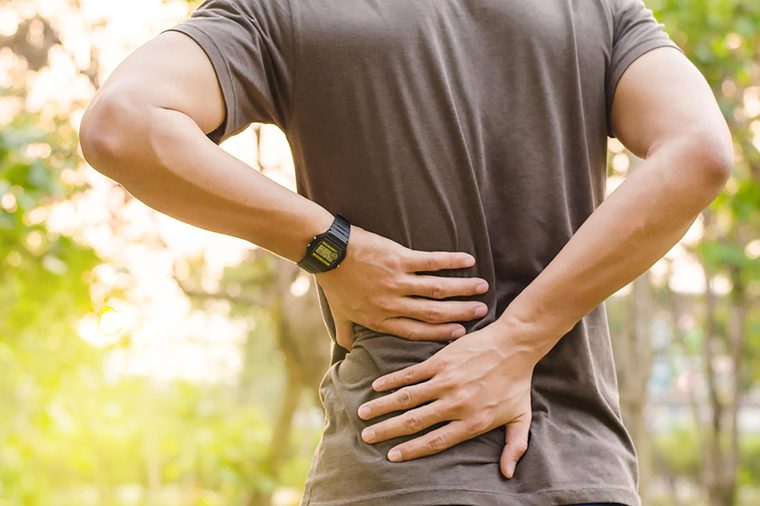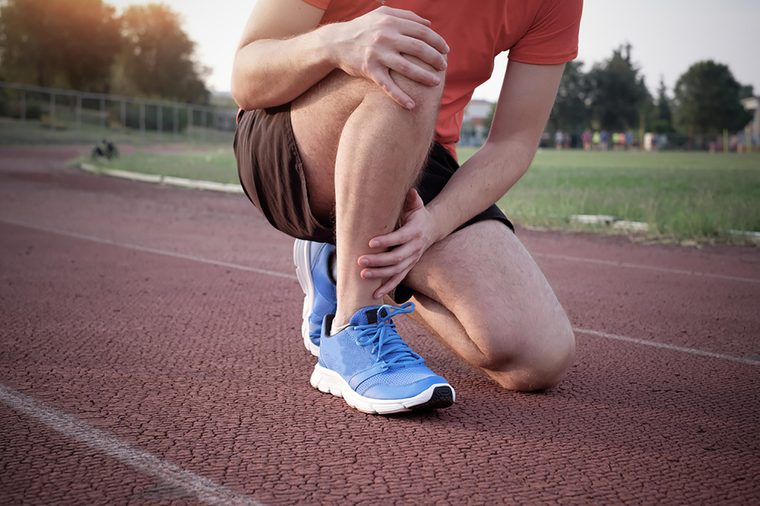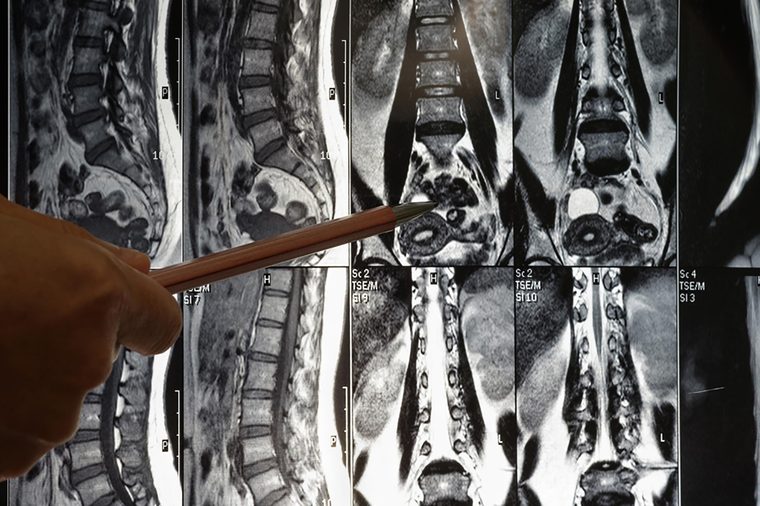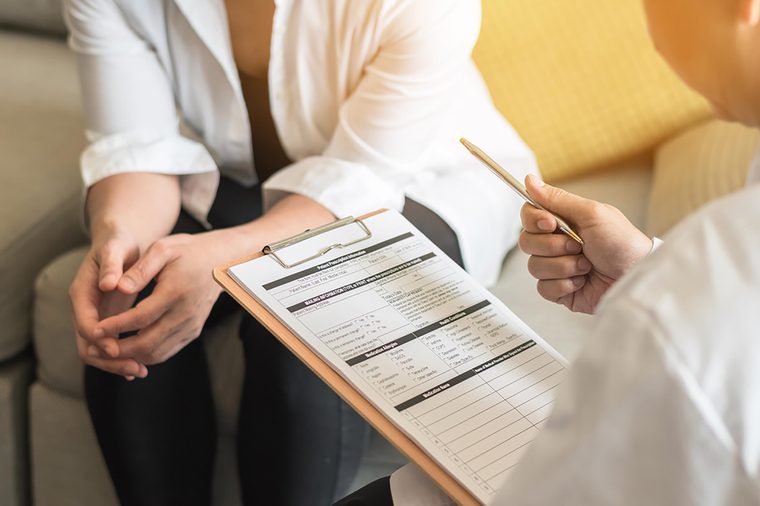
Why does my back hurt?
We’ve all experienced back pain one time or another, and chances are that ache can often be blamed on sciatica. (These are the signs your back pain is actually sciatica.) In fact, a staggering 40 percent of people will suffer from it in their lifetime. By definition, sciatica happens when your sciatic nerve is being compressed, but, it turns out, there’s a lot more to it. One of the lesser-known causes of sciatica is Tarlov cysts, or cysts along the nerve roots on the spine. Also known as perineural cysts, they generally don’t have any symptoms—until they enlarge. When that happens, the cysts compress the sciatic nerve, causing—you guessed it—sciatica.
If they don’t enlarge (and cause pain), most people may never know they have perineural cysts, meaning doctors rarely diagnose it. Still, what exactly are perineural cysts, and where do they come from? Here’s everything you need to know.

They’re filled with cerebrospinal fluid
Tarlov cysts contain the fluid that surrounds your brain and spinal cord. They form when normal cerebrospinal fluid (CSF) gets trapped in the nerve root sleeve, explains Charla Fischer, MD, an orthopedic surgeon at the Spine Center at NYU Langone Health. Fluctuations in CSF can cause the cysts to grow larger, making them more likely to trigger pain. Of course, there are numerous potential causes for your back pain—see if any of these might explain your aches.

The cysts can be no trouble—or agony
There’s a reason you’ve never heard of Tarlov cysts: They’re uncommon. About five to nine percent of people have them, and women are more likely to have them than men. If you’ve had cysts elsewhere on your body, you could be at higher risk. Here’s what you need to know about the cysts and other growths on your skin. However, most people never realize they have Tarlov cysts. The only time they might show up is during an MRI on your back. Around one percent of people will experience pain from the cysts, according to Dr. Fischer. “They hurt when they irritate a nerve, or when they compress the spinal canal,” she explains. If your nerve is pinched, you might notice pain radiating from your lower back to your leg—that’s sciatica. If you have spinal canal compression, you might get numbness in both legs from the knee down, and it can be worse while standing.

Tarlov cysts can give you gyno symptoms
Depending on which nerves are affected, this condition can lead to urinary and bowel issues. Women with Tarlov cysts may even be misdiagnosed with gyno problems, according to the American Association of Neurological Surgeons. That’s because nerves in the lower back not only extend to the groin but also play a role in sexual, bowel, and urinary function. Still, be sure to get your down-there symptoms thoroughly evaluated—you may actually have another issue such as pelvic-floor dysfunction.

You almost definitely won’t need surgery
If you get diagnosed with a Tarlov cyst (they can be seen on an MRI), see a physiatrist—a non-surgical back doctor. “NSAIDs (like ibuprofen), oral steroids, and physical therapy can help alleviate the nerve root inflammation and help decrease the pain,” says Dr. Fischer. You can also try one of the many home remedies for a sore back. If you have chronic pain from the condition, your doc may suggest a cortisone shot. While doctors don’t generally recommend aspirating these cysts (they tend to fill right back up), they do sometimes drain them then insert a glue-like substance, which may prevent them from re-filling. Rarely, in extreme cases, surgery will be the best solution, according to Dr. Fischer.

Stay active
The latest thinking on bad backs is that after some initial rest, you want to get moving. Walking is especially good for you because it helps you stay loose. Physical therapy and other strength-and-flexibility regimens can play a crucial role in keeping the back strong and stable. If you’re a runner though, take it easy because running (after months of rest) could reignite the pain. According to Stephen Massimi, MD, of the Hospital for Special Surgery, it’s best to ease into running to find how much you can tolerate. Distance running may be too much, but running shorter stretches, or doing run-walk intervals, should be fine. His best tip on exercise and physical therapy: “It shouldn’t hurt. Don’t try to push through pain.”
